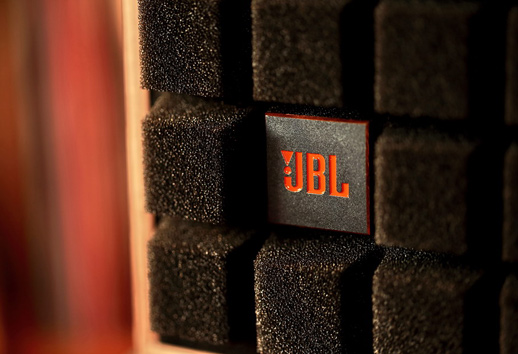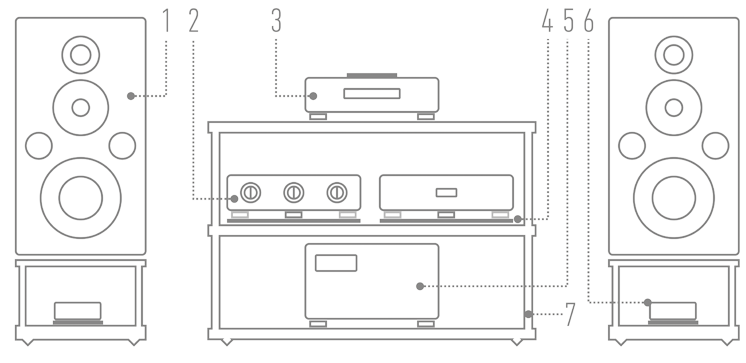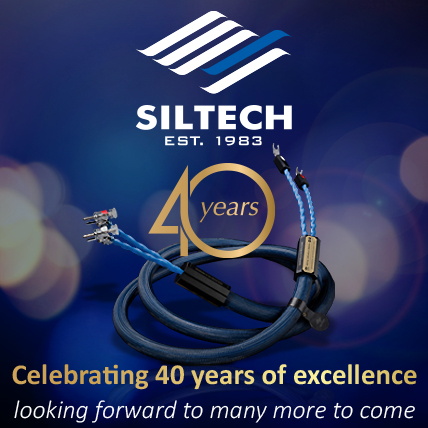|
Loudspeakers | stand-mounted JBL
Manufacturer: HARMAN INTERNATIONAL INDUSTRIES, Inc. |


|

|

Vintage is just a seemingly similar concept to retro. In fact, these are two different approaches, which have a common core: reaching for ideas from the past. Vintage is not a fashion, but rather a stable trend, in the audio industry it has been present since the late 1980s, having the largest fan base in Japan and more generally – in Asia. It is primarily about using technical solutions abandoned today and replaced with others, in theory, better ones. But while retro feed on nostalgia, vintage in audio is a largely pragmatic trend: it's about restoring some elements to the ritual of playing music that have been sacrificed in the name of improving the bandwidth extension, its alignment, power load and distortion reduction. Although these are all desirable, important changes, they have also caused a loss of such qualities as: directness of the presentation, pace, naturalness, fluidity and an organic sound. And only the most expensive modern designs offer all the aforementioned features - before and after the full-stop. | JBL Vintage The JBL company belonging to the Harman International Industries group was one of the manufacturers who noticed this problem at the very beginning, i.e. in the first half of the 1980s. The works on the so-called "Third Project", or loudspeakers to replace the Paragon model began back then. In 1985, the DD55000 Project Everest speakers were ready. This model was a base for the first speakers created for the Japanese market – the K2. Works on the latter started in 1988 and ended a year later. Two versions of the speakers were introduced - the top K2-S9500 and the slightly cheaper K2-S7500. There were three elements worth noticing in their design: the presence of horn-loaded tweeters, large paper woofers and generally large sizes. All these elements reminded me of the old designs of Western Electric, Altec etc., as well as of JBL itself. | Monitor Series Simultaneously with the K2 project, another project was started using model prepared for a professional market as a base for further development. You will find their story in the Studio Monitor 4429 (HF | No. 118) review. So let me just shortly remind you that in 1968, the 4310 Pro Studio model was introduced, which was created for use in recording and mastering studios, and was to be used set close to the listening position – e.g. above the mixing table. Ed May was the largest contributor to his project, and Bart Locanthi was responsible for computer modeling (source: Development of an Industry Standard - JBL 4310, „Audioheritage.org”). In the 1970s, this monitor was used in large part of American studios. From 1970 until 1978 it was also produced in the "home" version under the name L100. This version was distinguished by a very characteristic chequerboard-shaped grill. In 1985, a 4425 studio monitor was presented, which was to replace the older 4310. It was a two-way speaker. In 2011, the third monitor in this series was presented, called 4429 - this time it was a larger, three-way design. And this year, a refreshed version of the L100 version was presented during the CES 2018 show in Las Vegas. It is called L100 Classic. This fact has a special meaning as the original L100 was also presented for the first time at the CES in Chicago in 1970. According to Jim Garrett (Senior Director, Product Strategy and Planning, Luxury Audio, Harman): "These were not only the best-selling JBL speakers of all time, but – as it seems - the best-selling speaker of the 1970s, regardless of the brand ". | L100 Classic JBL managed to achieve something rare with this model – combination of both retro fashion and vintage spirit. The former one is represented by an unusual, architectural grill made of Quadrex foam, having the shape of interconnected pyramids, and a characteristic drivers array and the presence of tone adjustments. The grill is available in three colors: black, navy blue - and as the pair we received for test - orange. Let's be honest - the latter rules! The enclosure is finished with natural walnut wood veneer. The knobs on the front are the L-pad attenuators, which allow user to adjust how much treble and midrange one hears. 
All the rest, however, is a modern development of original technologies. The L100 Classic is a large three-way, stand-mounted loudspeaker with ported cabinet. The treble is delivered by the new JT025Ti1 tweeter with a titanium 25mm (1") dome. It has been loaded with a waveguide with an acoustic lens that improves integration with the conical midrange driver. This is the 105H-1 driver with a 125 mm (5 1/4") diaphragm of pure cellulose coated with polymer. The lowest part of the band is played by a 300 mm (12") JW300PW-8 subwoofer driver with membrane also made of pure cellulose. It features a powerful, rigid basket and a double magnet. And one more thing - the original L100 featured a different array of drivers and knobs. The one used for the L100 Classic is modeled on a floor-standing L100T3 model from 1988.  The speakers measure - 663.6 x 389.7 x 371.5 mm – which is close to the dimensions of the aforementioned 4429 Studio Monitor (635 x 400 x 300 mm), but they are 5 kg lighter than them. They will work perfectly on the stands that I use for the Harbeth M40.1, which I also used when reviewing the 4429. The general rule is that the speakers should placed so that the tweeter is at the level of the listener's ears. But this is not the only possibility. JBL offers special light stands for them, which are styled after stands from the 1960s. The speakers is placed bit lower in them, but the front baffle is tilted back. It looks fantastic, although from the acoustic point of view it is not an optimal solution. The speakers were driven by the Soulution 710 power amplifier. As the source, I used the Ayon Audio CD-35 High Fidelity Edition SACD player and the Muarah MT2 turntable with the Jelco TL-750L tonearm and the Miyajima Laboratory Madake cartridge.  Recordings used for the test (a selec- tion)
Japanese issues available at 
You do not have to even try hard to hear what these speakers surpass the majority of modern designs with: high fidelity. It should be clear, because all audio devices seem to realize this postulate, but we do not live in the world of ideas, but of practical solutions. That's why we always ask: fidelity, but why? Tested JBLs are faithful to the "truths of the time" if I can say so. They present a recording as it is, not trying to improve it, but also without trying to proof, how good they are. 
Their sound is incredibly open and at the same time compact. They are not warm, although they are far from sounding bright; they are simply open. Their dynamics is incredible. It is also very well differentiated. |

If we listen to "LS100" comparing them to other, equally open sounding speakers, but contemporary ones, we will hear how "the youngsters" try to push the limits, as they try to deliver as much detail as possible, as they push forward. The tested speakers are also detailed and subtle, but they do it without being intrusive, trying to present the whole picture first, and only then the details. This is, however, let me repeat once again, an open sound that masks nothing. The loudspeakers show a lot of air around the instruments and they are masters in the conveying of acoustics of the recording and reverberations accompanying the basic sounds - both added and existing ones. They go deep into down with the bass, but they are not focused on this part of the band. It means that they sound like monitors, and only if the recording features a really low bass notes, they deliver them in such, that is, strong and dense. 
Their most important advantage is how focused is the sound. These are speakers sounding as if we had one wide-band driver in front of us, I did not notice the transition between the drivers. You can feel them only by slightly smaller energy of the sound around the crossover frequency. But you need to know where to look for it and really want to look for it at all. During normal listening sessions it will be an irrelevant modification. Tonally the L100 Classic are slightly brighter than the M40.1 Harbeth they were compared to, but I would never say that JBLs sound bright or light. They do illuminate sounds, they open up treble stronger. In the Harbeths, the opening comes from the resolution, from the depth of the sound, and here it comes from the detail and dynamics, more from the outside. They are therefore more sensitive to the quality of the recordings. They will not massacre the lesser quality ones, but - like monitors - they will show the truth about every recording. Like on the Only By The Night by the Kings Of Leon, or 13 by Black Sabbath. In both cases, the problem is compression, which on Kings Of Leon reduces the size of instruments and vocals, and with Black Sabbath slightly brightens the sound. In both cases, however, all it takes is a slight reduction of volume level so that everything returns to normal. Playing well-produced albums, say – one I have not listened to for a long time - the duet of Stan Getz and Charlie Byrd from the Jazz Samba, then we get an open sound and beautiful tonal balance with an emphasis on density. One of the more interesting properties of the JBL speakers is how the presentation changes with the volume level. With higher volume the sound sources are enlarged, when the volume is turned down - the opposite happens. So one can look for the right position of the volume knob. And you must know that all recordings are mastered at a specific intensity (SPL) and only with the same listening conditions will we get the same dynamics and tonality; every other level changes them. JBLs allow such things because they present more than other speakers. What distinguishes the L100 Classic loudspeakers from other 1970s ones, but from the "BBC school", are different priorities. American speakers focus on dynamics, openness, pace, fidelity. To achieve that they „sacrifice” density and internal resolution. Although they are detailed, their details are less differentiated. Also low bass, although beautiful in its scale and selectivity in JBLs, is not as dense as with the Harbeths, although they have woofers of the same diameter. Despite these differences, it is amazing how clearly these speakers show a different approach to sound than the one which is cultivated in modern times. They are coherent, fast, dynamic, but above all they try not to harm. They do not tire in long listening sessions, they complement the system, instead of being its enemy. However, the L100 Classic are different enough from Spendors, Harbeths and Grahams that it will be easy for you to determine if they offer what you need or not. Grills | The grills used for the L100 Classic are built differently than any other, so they have a different effect on the sound. The material stretched in front of the tweeter always suppresses its sound to some extent. The "pyramids" in the JBL grills introduce something else into the equation - greater attenuation in the directions beyond the main axis. Putting them on actually gently tones the upper treble, but it does not matter much. Much more important is the effect on the midrange – with grills on this part of the band is slightly withdrawn, calmer, which makes you hear more ... treble. The presentation changes considerably, but it is about changing the perspective, not sound quality. With grills it seems as if we were sitting a bit farther away from the performers, the reverbs are clearer, and the sound is not so palpable. I carried out the test without the grills. But not because it's a clearly better option, but because I prefer a sound closer to me, stronger. If you want to keep them on even during serious listening sessions it's fine too. For such a system, however, I would recommend a slightly warmer amplifier or source. L-pad | The tone controls in the L100 Classic loudspeakers are very interesting and useful. The operation of the potentiometers is quite mild, you have to push them hard to hear a significant change, which allows for a quite precise, accurate adjustment. I performed most of the listening sessions in a neutral position, i.e. 0 dB. But at the end of the test I was more and more often choosing a position in which the treble was slightly suppressed and the mid-tones stronger. It was not even about the tonality as such, although this has obviously changed, but about the character of the sound. In this setting, the speakers delivered richer sound with the foreground placed closer to me. That's how I like it. You can choose a different variant, but the most important fact is that you can do it, it's a choice. It will also help with recordings that have a bit too strong sound attack, whether it is 1958 Oscar Peterson Trio's On The Town, or 1998 Eva Cassidy'sSongbird. Simply the L-pads can be very useful. Summary Nowadays, speaker designers strive for the widest frequency range, the highest detail resolution and the largest sound stage possible. They use specific techniques and solutions to achieve that, that are not "transparent" to other sound characteristics. The JBL L100 Classic speakers show that modern design techniques can be used to obtain much of what the 1960s and 1970s speakers were characterized with, with a few bonuses. So there is an incredible dynamics, speed and open sound. The band is greatly extended in both directions, but these are not loudspeakers that "pump" the bass up. The soundstage, or rather: imaging, is great, much better than with all the loudspeakers with wide baffles that were once produced. There is a large depth, there is scaling the size of instruments, there is finally a wide panorama. When building a system with these speakers, I would think of some warmer amplifier, because from time to time these loudspeakers may play a bit hard attack in the midrange. This is usually a recording problem, but there is no high enough resolution to not worry about it. It could be a high quality solid-state amplifier, but also a tube one - the L100 Classic is easy to drive. Unlike other "Monitors" by JBL these do not need an amp with a high output to present their full potential. So give them a try, give them also some time, even if you're looking for something else. These are loudspeakers that represent a pinnacle of acoustic engineering. A classic, but for the 21st century - this is what the L100 Classic are.  The JBL L100 Classic is a three-way loudspeaker with external proportions and appearance characteristic for the 1960s and 1970s. They were designed by the long-term designer of JBL, Mr. Chris Hagen, who in 1988 designed a free-standing, three-way L100T3 loudspeaker with a 12" woofer. The L100 were stand mount speakers and so are the L100 Classic. The concept, however, repeats what Mr. Hagen invented for the T3 model. As he says, all elements have been improved and, if necessary, replaced: drivers, cabinet tuning, as well as a crossover. It was easier because he used the world's most advanced research laboratory in Northridge, California. Drivers | The most important changes concern drivers. The low tones are played by the JW300PW-8 300 mm (12'') woofer equipped with an extremely heavy and rigid basket, a double magnet system and a pure cellulose membrane. The membrane has a characteristic concentric embossing that stiffens it. We know it from high-performance stage speakers, and in the past it was a commonly used solution. The novelty is the upper rubber suspension. Midrange is reproduced by the JM125PC 125mm (5 ¼'') cone driver. It features a rigid, cast basket and a cellulose membrane, but reinforced with polymer. And finally, the treble is played by the JT025Ti1 25 mm (1") dome tweeter. It has been recessed into a flat horn with a phase corrector. This is the system called "acoustic lens" by JBL. It's not about improving the efficiency of the driver, but about controlling the sound waves dispersion. The dome is made of titanium. The midrange driver and tweeter speakers are not placed on the speaker's axis but shifted to the right. The left and right speakers are not a mirror image, the shift in both channels is in the same direction. On the left side of these drivers there is a plaque with tone controls for mids and treble and a large bass-reflex port. The attenuators are easy to use. Let me add that there is more room to attenuate mid tones and treble than there is to add more of them. It's a good solution. 
Cabinet | The cabinet is made of MDF finished with natural walnut veneer. The front baffle, in turn, is painted black. On the back you can see a plastic piece with single speaker terminals. Similar are used in Harbeth M40.1 which I use and - unfortunately - these are some of the worse terminals I know. Speakers of this class should feature much better speaker posts. The grills are made differently than it is currently practiced. Their basis is an MDF board with edges finished in the same way as the sides of the speaker. So when they are on they integrate nicely with the speakers. Instead of the fabric stretched on the frame, an acoustically transparent pyramid-shaped foam is used. One more thing, these speakers can be set vertically or horizontally, although vertical position is recommended.  Technical specifications (according to manufacturer) Frequency range: 40-40 000 Hz (-6 dB) |

|
Reference system 2018 |
|
 1) Loudspeakers: HARBETH M40.1 |REVIEW| 2) Line preamplifier: AYON AUDIO Spheris III Linestage |REVIEW| 3) Super Audio CD Player: AYON AUDIO CD-35 HF Edition No. 01/50 |REVIEW| 4) Stands (loudspeakers): ACOUSTIC REVIVE (custom) |ABOUT| 5) Power amplifier: SOULUTION 710 6) Loudspeaker filter: SPEC REAL-SOUND PROCESSOR RSP-AZ9EX (prototype) |REVIEW| 7) Hi-Fi rack: FINITE ELEMENTE Pagode Edition |ABOUT| |
|

|
Cables Analog interconnect SACD Player - Line preamplifier: SILTECH Triple Crown (1 m) |ABOUT|Analog interconnect Line preamplifier - Power amplifier: ACOUSTIC REVIVE RCA-1.0 Absolute-FM (1 m) |REVIEW| Speaker cable: SILTECH Triple Crown (2.5 m) |ABOUT| |

|
AC Power Power cable | Mains Power Distribution Block - SACD Player: SILTECH Triple CrownPower (2 m) |ARTICLE| Power cable | Mains Power Distribution Block - Line preamplifier - ACOUSTIC REVIVE Power Reference Triple-C (2 m) |REVIEW| Power cable | Mains Power Distribution Block - Power amplifier - ACROLINK Mexcel 7N-PC9500 |ARTICLE| Power cable | Power Receptacle - Mains Power Distribution Block: ACROLINK Mexcel 7N-PC9500 (2 m) |ARTICLE| Power Receptacle: Acoustic Revive RTP-4eu ULTIMATE |REVIEW| Anti-vibration platform under Acoustic Revive RTP-4eu ULTIMATE: Asura QUALITY RECOVERY SYSTEM Level 1 |REVIEW| Power Supply Conditioner: Acoustic Revive RPC-1 |REVIEW| Power Supply Conditioner: Acoustic Revive RAS-14 Triple-C |REVIEW| Passive filter EMI/RFI: VERICTUM Block |REVIEW| |

|
Anti-vibration Speaker stands: ACOUSTIC REVIVE (custom)Hi-Fi rack: FINITE ELEMENTE Pagode Edition |ABOUT| Anti-vibration platforms: ACOUSTIC REVIVE RAF-48H |ARTICLE| Isolators: |

|
Analogue Phono preamplifier: Phono cartridges:
Clamp: PATHE WINGS Titanium PW-Ti 770 | Limited Edition Record mats:
|

|
Headphones Headphone amplifier: AYON AUDIO HA-3 |REVIEW|Headphones: Headphone Cables: Forza AudioWorks NOIR HYBRID HPC |
main page | archive | contact | kts
© 2009 HighFidelity, design by PikselStudio,
projektowanie stron www: Indecity







 etro speakers still remain fashionable. It's harder and harder to tell if it's vintage or retro, because most people do not seem to differentiate these concepts. I was asked this question by editor Dariusz Stańczuk in his Classic Design program on the RMF Classic radio, when I was talking about vintage trend in the audio industry. Let's repeat then: 'retro' is a fashion that refers to the style of design from many years ago. In retro, it's all about an impression of returning to what once was, an appearance, not an essence. We already had fashion for the 1920s and 30s, then for 1950s and 60s, now we are in the middle of retromania à la 1970s and 80s.
etro speakers still remain fashionable. It's harder and harder to tell if it's vintage or retro, because most people do not seem to differentiate these concepts. I was asked this question by editor Dariusz Stańczuk in his Classic Design program on the RMF Classic radio, when I was talking about vintage trend in the audio industry. Let's repeat then: 'retro' is a fashion that refers to the style of design from many years ago. In retro, it's all about an impression of returning to what once was, an appearance, not an essence. We already had fashion for the 1920s and 30s, then for 1950s and 60s, now we are in the middle of retromania à la 1970s and 80s. 

















